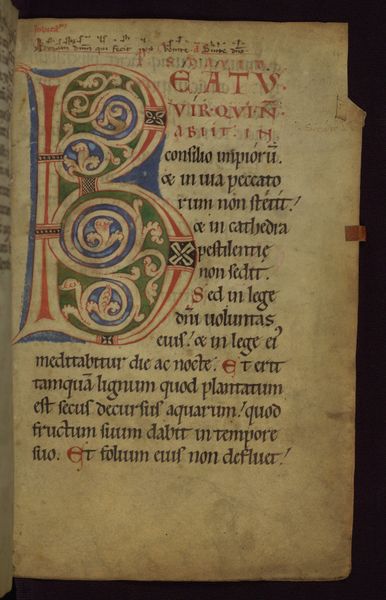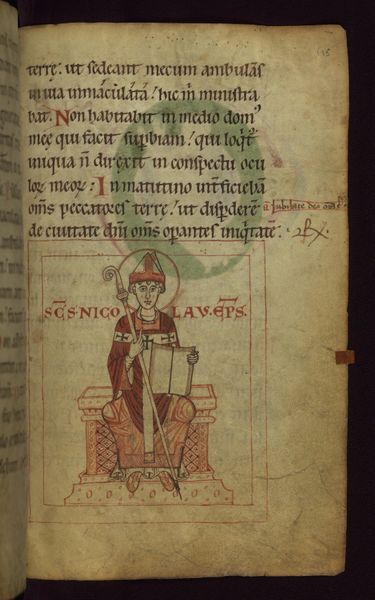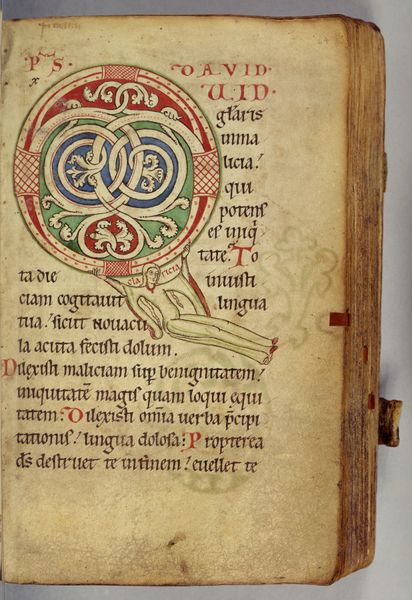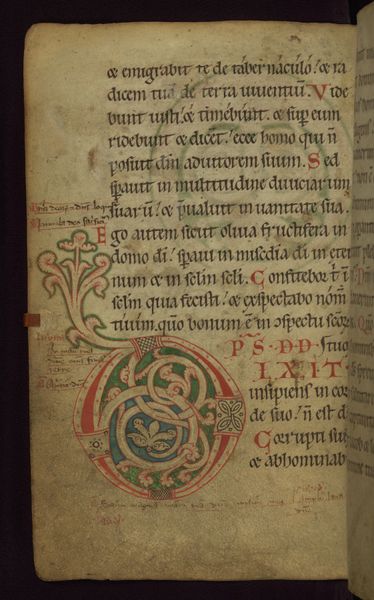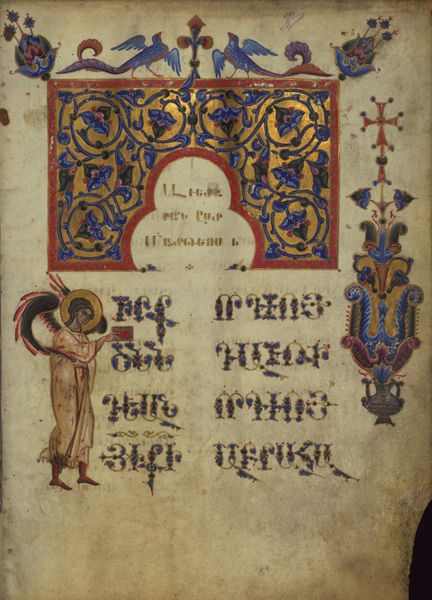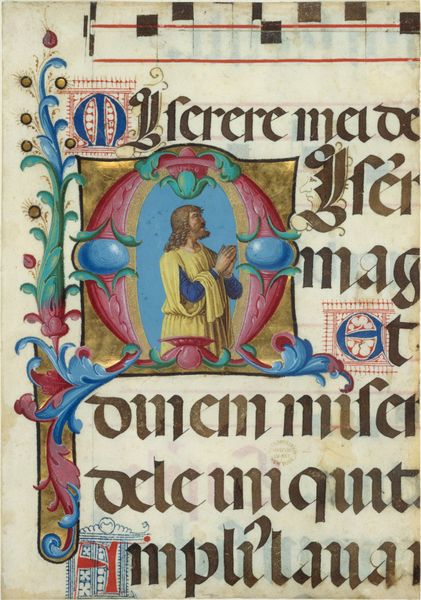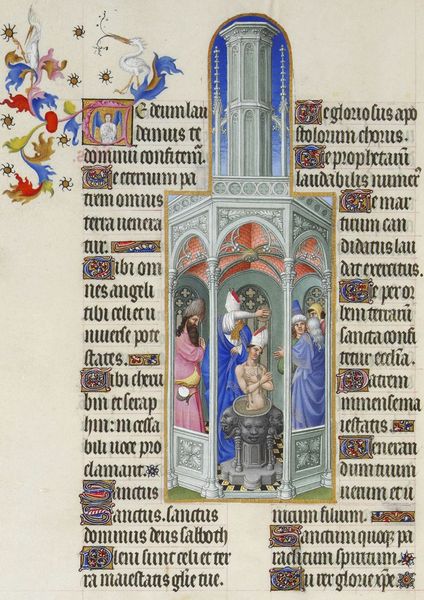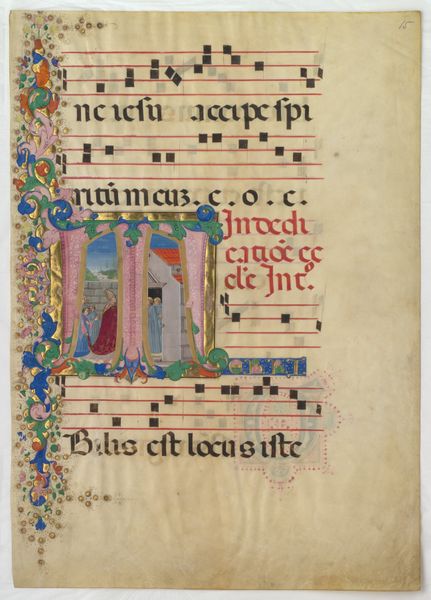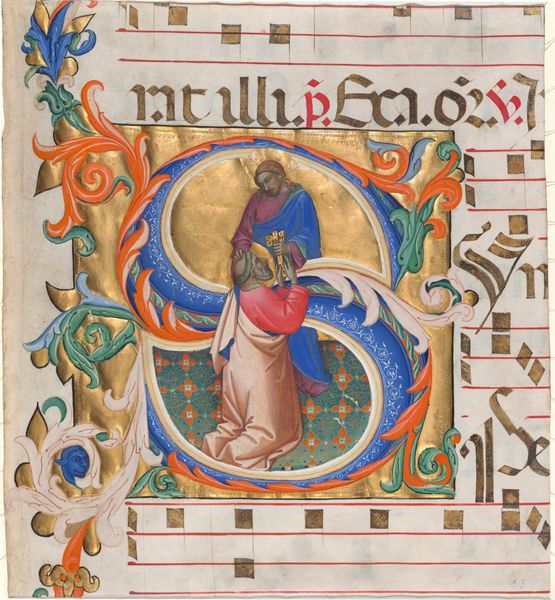
tempera
#
byzantine-art
#
medieval
#
tempera
#
figuration
#
coloured pencil
#
history-painting
#
miniature
Copyright: Public domain
Curator: Looking at this illuminated manuscript page, we see a “Historiated initial ‘D’ with Orant.” While we don’t have a precise date, it’s clearly rooted in the medieval tradition. The artist has rendered the initial "D" with vibrant tempera on vellum, a classic medium for these works. Editor: The palette feels constrained yet striking. The greens and blues of the inner circles offer a soft, contemplative backdrop to the central figure. There’s something vulnerable in the figure’s posture, their hands raised in what looks like prayer or supplication. Curator: Yes, the orant posture – with raised hands – is a powerful visual symbol in early Christian art, indicating prayer or intercession. It's a pose that stretches back to early catacomb paintings, reflecting a sense of personal devotion becoming formalized. Here it’s almost as if the artist has encased the very act of prayer within the letter itself. The use of the initial as a narrative frame connects the text with the act of spiritual pleading, placing both under a singular lens. Editor: How interesting. Considering the manuscript’s function, it makes perfect sense to visually amplify such gestures of devotion. It also draws my attention to the audience for this page, who would have understood these iconographic signals so readily. I mean, someone painstakingly rendered each detail on this miniature. Can you imagine the investment that went into such craftsmanship? The commitment needed to preserve and transmit these visual and textual symbols across generations is enormous. Curator: Exactly, and the stylization serves memory too. Those formal poses and color schemes were consistent, reinforcing recognition of what those symbol combinations meant—in much the same way modern corporations labor over their logos, to shape meaning, familiarity, and lasting brand recognition. Editor: Yes, the idea of a “brand” of faith is fascinating. Thinking about the socio-political power interwoven with religious institutions in the Middle Ages, this carefully designed visual vocabulary certainly reinforced those established structures. This was a potent visual means of shaping people's interior lives. Curator: In a sense, this little 'D' encapsulates both a cry for personal intervention and an emblem of enduring cultural authority. Editor: A humbling thought—a prayer, embedded in history itself.
Comments
No comments
Be the first to comment and join the conversation on the ultimate creative platform.
